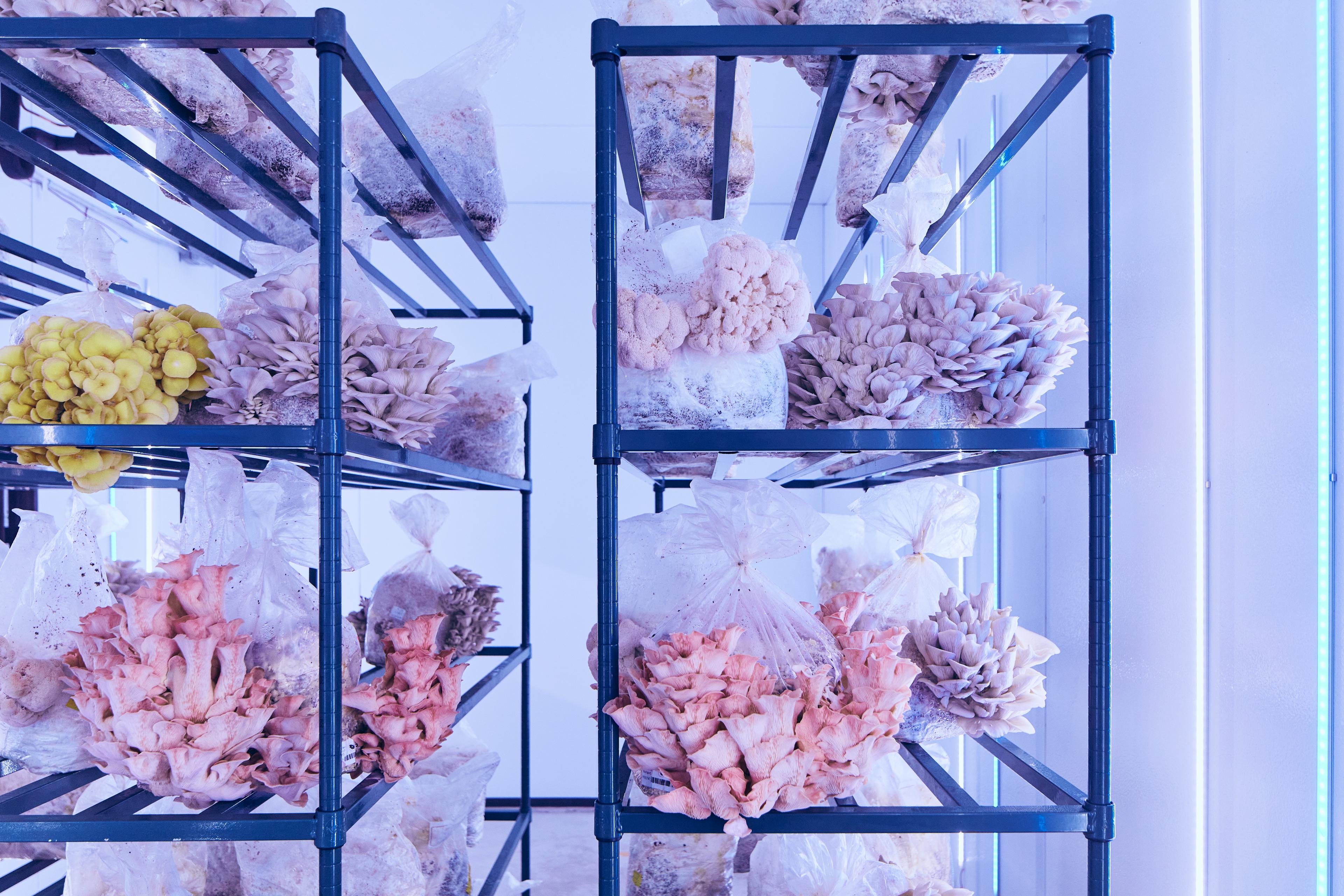Essential inputs, including compost and peat moss, have become rarer since the pandemic.
Driven by increased interest in meat alternatives and unique health benefits, the mushroom industry has boomed in recent years. The global mushroom market reached a value of $45.8 billion in 2020 and is expected to reach more than $63 billion by 2027. But despite increased buzz, supply chain challenges make it increasingly difficult for mushroom farmers to ship enough product to turn a profit. While farmers of all kinds face COVID-related shortages, mushroom farmers have encountered special difficulties accessing essential inputs in time for rapid mushroom yield cycles.
Successful mushroom cultivation starts with mineral rich compost, primarily made using agricultural byproducts from wheat, chickens, almonds, corn and cotton. With shortages and increased competition in the industry, raw materials are becoming increasingly limited. For example, one of the primary ingredients of mushroom compost is wheat straw. Prior to recent shortage fears, farmers were already experiencing increased prices and a limited supply due to droughts. Without a steady supply of straw, farmers have been forced to change their compost recipes, which poses risk of unexpected crop threats and decreased yield.

While compost is widely used in farming, its centrality in mushroom cultivation makes raw material shortages especially devastating. Compost is the primary grow medium used in commercial mushroom production. Like crops without soil, these mushrooms cannot survive without the compost on which they feed and grow.
In addition to compost materials, mushroom farming relies on a steady supply of peat moss. Called a ‘casing layer’, peat moss is mixed with limestone and water before it is placed on colonized substrate (compost mixed with inoculated spawn). This layer serves to maintain the moisture necessary to produce strong, consistent yields. “Peat moss shortages have been widespread, with prices increasing over 80%,” said Sean Steller of Phillips Mushroom Farms, a leader in U.S. mushroom production.
These shortages are a result of poor harvests and a spike in demand. Canada, which supplies over 90% of the U.S.’s peat imports, experienced a hurricane and severe summer storms in 2021, leading to overly damp peat and limited harvests. At the same time, peat moss sales spiked due to consumer interest in gardening and landscaping during the pandemic. “When the quality of peat moss differs from the norm, mushroom yield and quality can be impacted,” said Steller, pointing to size and texture. “This leads to the dual-threat of decreased production alongside rising input costs.”

Beyond the difficulty acquiring raw materials, labor shortages have plagued the mushroom industry in recent years. According to Steller, “There are countless factors impacting the labor market, but a few specific to mushrooms include intense competition and specialized skill requirements.”
Mushroom harvesting is an extremely manual process that requires handpicking and delicate handling – bruising the produce could make it impossible to sell. Consistent, experienced labor is needed to manage the mushrooms with care and keep up with quick growing cycles.
Mushroom industry executives in California blame state-level regulations for shortages. Roberto Ramirez of Mountain Meadow Mushrooms cites increased minimum wage and changes to overtime laws as his biggest challenge in recent years. While overtime used to kick in after 60 hours per week, it now kicks in after 40 hours, significantly reducing the amount of harvesting that can be achieved before paying overtime. Ramirez noted, “All agricultural employers I know of have either reduced their output or invested in some sort of mechanical way to reduce labor cost.”
“All agricultural employers I know of have either reduced their output, or invested in some sort of mechanical way to reduce labor cost.”
Increased minimum wage and changes to overtime laws aren’t the only government regulations that may affect producers. Since they operate year round, mushroom farms don’t qualify for the H-2A temporary worker program, which allows farmers to hire temporary immigrants to work seasonal jobs.
Without the ability to apply for this program, many farms are operating 25% below capacity. The Farm Workforce Modernization Act of 2021 could alleviate this issue – if passed, the law would allow farmers to utilize H-2A for non-temporary workers, which could reduce labor gaps.

Some mushroom farmers are attempting to meet growing demand by investing in new technology and expanding into new lines of business. While mushroom picking robots may be a few years out, Phillips Mushroom Farms is focusing on improving efficiency and automation in harvest, supply chain and packaging.
Other companies, such as Smallhold, are using technology to rethink the entire mushroom growth and distribution process. The company sets up ‘minifarms’ in restaurants and grocery stores. These cloud-controlled containers regulate temperature, light, oxygen levels, and moisture to create the ideal climate for their mushrooms to grow. By installing these minifarms in restaurants and grocery stores, Smallhold provides hyper-local mushrooms that eliminate the need for additional transit and distribution once harvested.

Mushroom farms are also diversifying their portfolios by entering the specialty mushroom market. While the majority of the mushrooms in the U.S. are Agaricus Bisporus, or Button Mushrooms, producers have begun growing new varieties as the industry expands. Specialty mushrooms are drawing interest for their higher margin returns, shorter growing cycle, and use in medicine.
Mountain Meadow Mushrooms, for example, has increased their mushroom offering from three to eighteen different varieties, including specialty and medical mushrooms such as Lion’s Mane, Cordyceps, Turkey Tail, and Reishi. Many of these get sold as powders or tinctures. Farmers look to specialty mushrooms to provide them with new channels of revenue, beyond the traditional produce model.
While mushroom farmers face many challenges, the industry remains hopeful due to potential changes in government regulations, innovation and continued consumer excitement about mushrooms. Exciting advancements such as mushroom leather in cars, faux bacon, packaging materials, and building materials suggest market demand will continue. Whether farmers will have the resources to meet that demand, however, remains to be seen.







